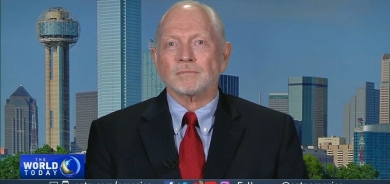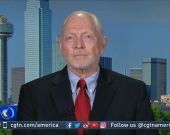Franziska Ohnsorge and Raju Huidrom, senior economists at The World Bank to Gulan: Current low oil prices are a reminder to oil-exporting countries of the importance of diversification
February 2, 2016
Exclusive Interviews

Recently the global energy market has been experiencing a dramatic transformation with regard to falling oil prices, and for navigating the Causes and Consequences of this steep decline of oil prices, and the appropriate policy responses that should be adopted by those countries that heavily depend on oil revenues, we in “Gulan Magazine” contacted the World Bank to get its insightful analyses concerning this critical issue, and our questions answered jointly by tow of it is senior economists, Franziska Ohnsorge and Raju Huidrom.Franziska Ohnsorge and Raju Huidrom, senior economists at The World Bank to Gulan: Current low oil prices are a reminder to oil-exporting countries of the importance of diversification
Recently the global energy market has been experiencing a dramatic transformation with regard to falling oil prices, and for navigating the Causes and Consequences of this steep decline of oil prices, and the appropriate policy responses that should be adopted by those countries that heavily depend on oil revenues, we in “Gulan Magazine” contacted the World Bank to get its insightful analyses concerning this critical issue, and our questions answered jointly by tow of it is senior economists, Franziska Ohnsorge and Raju Huidrom.
Franziska Ohnsorge -Prior to joining the World Bank- worked as Senior Economist in the Office of the Chief Economist of the European Bank for Reconstruction and Development, working regional surveillance, forecasting, and financial sector policy issues. She was also previously at the International Monetary Fund, covering a range of European and Central Asian economies. She received PhD in economics from the University of Toronto.
Raju Huidrom is an Economist at the Development Prospects Group of the World Bank. He is primarily engaged with monitoring of financial and macroeconomic developments in the global economy, contributing to the World Bank’s semi-annual flagship publication "Global Economic Prospects". Prior to the World Bank, he has worked at policy think tanks like the IMF, the Conference Board. He received an MA degree in economics from the Delhi School of Economics and a PhD in economics from the University of Virginia.
Below is the interview:
Gulan: Right now the global energy market is experiencing a dramatic transformation; we mean the steep falling in the price of oil, so what are the reasons and repercussions of recent sharp declining of oil prices?
Franziska Ohnsorge and Raju Huidrom.: The decline in oil prices is due to a combination of ample supply and weak demand from oil-importing emerging and developing economies (EMDE). A decomposition of oil price movements into demand and supply factors suggests that the decline in oil prices since mid-2014 has been predominantly (about 65 percent) driven by supply factors.
• Supply factors have included high stocks, OPEC’s reaffirmed commitment to its market share strategy at its December 2015 meeting, and an expectation of sharply rising exports from the Islamic Republic of Iran as sanctions that had hampered oil sector investment and exports have been lifted. In addition, the decline in U.S. crude oil production has been slower than expected owing to efficiency gains and cost reductions.
• However, pressures from softening demand have steadily increased as EMDE growth has slowed, compounded in the last quarter of 2015 by mild winter temperatures in the northern hemisphere.
While low oil prices may support global growth over the medium-term, they have caused significant real income shifts from oil-exporting countries to oil-importing ones and have imposed adjustment costs in commodity exporters. The World Bank’s June 2015 Global Economic Prospects and January 2016 Global Economic Prospects document some of these challenges.
Guan Oil exporting countries are facing enormously difficult financial and economic situations, what is the right and appropriate policy approaches that these countries should pursue in order to be able to cope with these tough challenges?
Franziska Ohnsorge and Raju Huidrom: To the extent that these challenges are temporary and there is ample policy room, policy makers in oil exporters could support activity with fiscal and monetary stimulus. Oil exporters that have entered the oil price slump of 2014 with large surpluses and low debt (Oman, Qatar, Saudi Arabia, and United Arab Emirates) may be able to smooth the adjustment. However, in most oil-exporting emerging markets, surpluses have already turned into sizeable deficits and rising debt. These countries could derive substantial gains from well-designed, credible structural reforms that retain investor confidence and capital flows in the short-run, and that lift growth prospects for the long-run.
Gulan: What oil exporting countries can and should do to stabilize the oil prices in the global markets?
Franziska Ohnsorge and Raju Huidrom: Oil-exporting countries are struggling to adjust to low oil prices. Growth in several of the largest developing country oil exporters weakened considerably in 2015, as the impact of deteriorating terms of trade on exports was compounded by tightening macroeconomic policy and softening investor confidence. Governments responded to falling fiscal revenues from the resource sector with spending cuts. Central banks raised interest rates to help moderate pressures on exchange rates or inflation rates. Investor confidence weakened on deteriorating growth prospects and credit ratings, resulting in declining capital inflows and currency depreciations. As a result, forecast downgrades have been concentrated in the regions with large commodity exporters (the eastern part of Europe and Central Asia, Latin America, and Sub-Saharan Africa).
Gulan: Amidst this severe crisis resulted from falling oil prices, what are the painful and hard lessons that should be learned by those countries which depend heavily on the oil revenues?
Franziska Ohnsorge and Raju Huidrom: Current low oil prices are a reminder to oil-exporting countries of the importance of diversification, as we say in our June 2015 Global Economic Prospects. Many commodity exporters’ economies are highly concentrated in one, or a few, products. Past episodes suggest that the pace of diversification often increases when resource revenues begin to decline. Examples of a successful diversification policy include Mexico and Malaysia.
Diversification efforts could include the following elements:
• Building institutions to reduce economic volatility. Resource-rich economies face the challenge of managing volatile resource revenues. Fiscal rules or well-managed stabilization funds can help smooth revenues and stabilize government spending, research shows.
• Changing incentives away from non-tradables (including from employment in the public sector). Resource-rich economies tend to have a significant share of government employment, and a sizeable non-tradables sector, which benefits from government spending and abundantly available labor, studies show. This non-tradables sector is typically characterized by low productivity growth relative to the tradables sector, in particular manufacturing. Reforms to provide market incentives for a transfer of resources towards the non-resource-based tradables sector may be helpful in some commodity-exporting countries.
• Encouraging export diversification. Export diversification is associated with higher growth, research shows. Public policy can support export diversification and sophistication by fostering vertical diversification in oil, gas, and petrochemical sectors (i.e., increased processing of the raw materials), and horizontal diversification beyond these sectors.
• Building human capital. Government investment, including in human capital, would be an effective complement to efforts to accelerate productivity growth in the tradables sector, studies show. In developing countries, social returns to education have been shown to be significant, and potentially higher than returns to physical capital.
Measurable effects of reforms, in terms of growth and productivity, can take a long time to materialize. Even in the short-term, however, reforms can have a considerable effect on activity. Policies could be implemented to ease the short-term transition cost, for example by assisting workers to move to new jobs and speeding up the repair of the capital bases of lending institutions. Some of the possible effects on activity are as follows:
• Reforms that involve capital investment (e.g., to address infrastructure needs) can stimulate domestic demand in the short-term.
• Labor market reforms, especially those that reform social benefits, can increase the labor supply (e.g., older workers), even though in the short-run they may imply lower real incomes, research shows. Even if associated with short-term disruptions, labor market reforms can be critical complements to other reforms. For example, labor market flexibility can amplify growth benefits from deregulation and product market reforms.
• Product market reforms (such as increasing competition or removing implicit and explicit subsidies) that result in unwinding excess capacity in inefficient firms (e.g., some state enterprises) can cause unemployment in the short run, as workers are laid off, and as banks’ new lending capacity is impaired by the need to write off nonperforming loans.
Gulan: Winston Churchill famously said that opportunities come during crises; do you think that this situation, regarding the plunge of oil prices, will present any opportunity for oil exporting countries?
Franziska Ohnsorge and Raju Huidrom: Sharp resource revenue losses have resulted in fiscal consolidation efforts in several oil exporting countries. Such consolidation could represent an opportunity for major public expenditure and revenue reforms, for instance, subsidy reforms combined with better-targeted social benefit reform and more productive public investment to alleviate supply side constraints. These fiscal reforms could be combined with renewed diversification efforts to foster more resilient growth and broader fiscal and export revenue bases.















